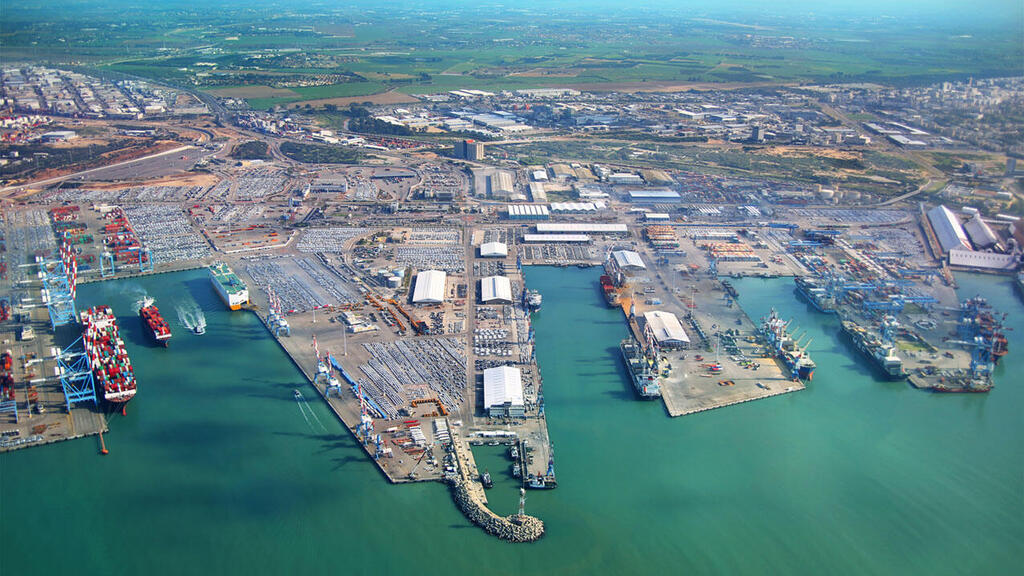American, British and European officials are pressuring Israel to allow the flow of aid to the Gaza Strip directly through the port of Ashdod, in order to alleviate the humanitarian crisis in the Strip, the New York Times reported early Monday morning. One of the sources who spoke to the newspaper said that U.S. Secretary of State Antony Blinken pushed for this in talks he had during his visit to Israel earlier this month.
More stories:
According to the proposal being promoted in the U.S. and Europe, the humanitarian aid destined for the Gaza Strip would be transported to the port of Ashdod via Cyprus, and from there be brought into the Gaza Strip through the Kerem Shalom crossing. This crossing, located on the Israel-Egypt-Gaza Strip border triangle, was opened by Israel to bring aid into Gaza last month - also following American pressure - and now the aid trucks enter both through Kerem Shalom and through the Rafah crossing on the border of the southern Gaza Strip with Egypt.
1 View gallery


Humanitarian aid destined for the Gaza Strip would be transported to the port of Ashdod via Cyprus
(Photo: National Photographic Ltd)
However, so far the aid itself has reached these two crossings only through Egypt, and the goal according to the report is to create an alternative to this while maintaining Israel's demands for a strict security check of the equipment that is brought into the Strip.
The New York Times notes that a small step toward opening the Ashdod port for aid to Gaza came on Friday, when the White House announced that Israel had agreed to transfer flour shipments to Gaza through the port.
British Foreign Secretary David Cameron said after that announcement from the White House: "We need these shipments to continue and for this port to remain open for aid."
According to the newspaper, which cited an Israeli source privy to the details, Jerusalem was not officially notified of the decision to move flour shipments through the port, and Prime Minister Benjamin Netanyahu's office refused to comment, but the defense cabinet "quietly agreed to the plan." The source stated that "Israel was reluctant to open the port due to the fear that the transfer of additional aid through its territory could provoke a public reaction at a time when hostages are still being held captive by Hamas in the Gaza Strip."
Meanwhile, the Unit for the Coordination of Government Operations in the Territories, which is responsible, among other things, for the transfer of civilian aid to the Gaza Strip, published on Saturday updated official data from the beginning of the war which shows that more than 9,500 trucks have entered the Gaza Strip since October 22 - the first date that aid entered the Gaza Strip after the October 7 massacre.
According to the data, so far 175,000 tons of humanitarian aid have entered the Gaza Strip. Of the trucks, 5,328 entered with 112,120 tons of food; 1,106 medical equipment trucks that carried 12,930 tons of aid; 902 water trucks carrying 18,120 tons; 1,393 trucks with shelter equipment carrying 11,640 tons; and another 785 trucks with "mixed" assistance, carrying 11,640 tons. "Our war is against Hamas, not against the people in Gaza," according to the IDF.
In recent days, videos of residents testifying to hunger have been published in Gaza. UNRWA, the UN agency for Palestinian refugees operating in Gaza, claims that 800 trucks need to enter the Strip every day for three months to meet the needs of the residents.
The United Nations repeatedly warns of a serious humanitarian crisis in the Gaza Strip. According to the organization, 1.9 million of its residents - 85% of the total population estimated at 2.3 million people - have been displaced from their homes and are facing difficult conditions in the southern Gaza Strip.

